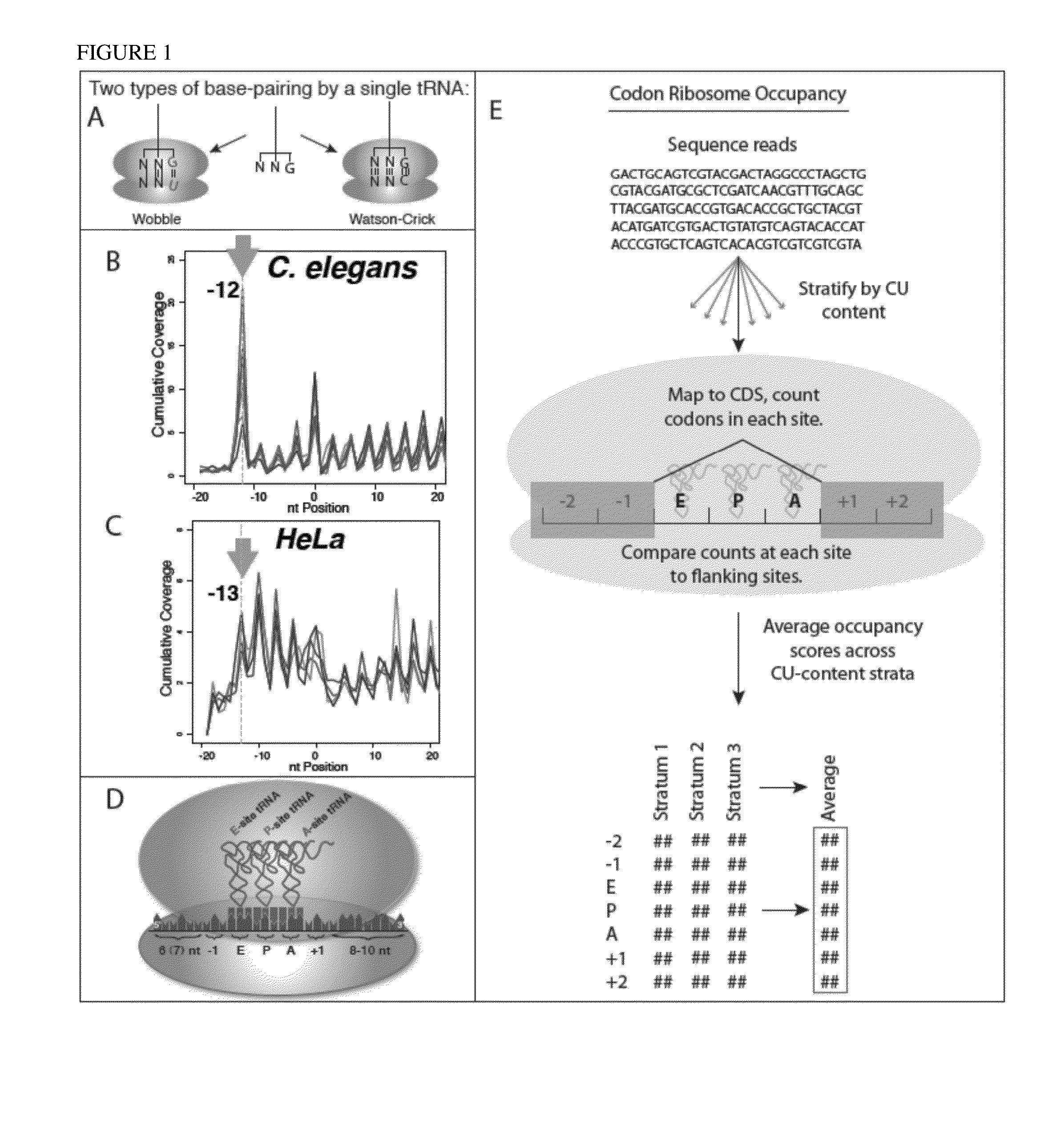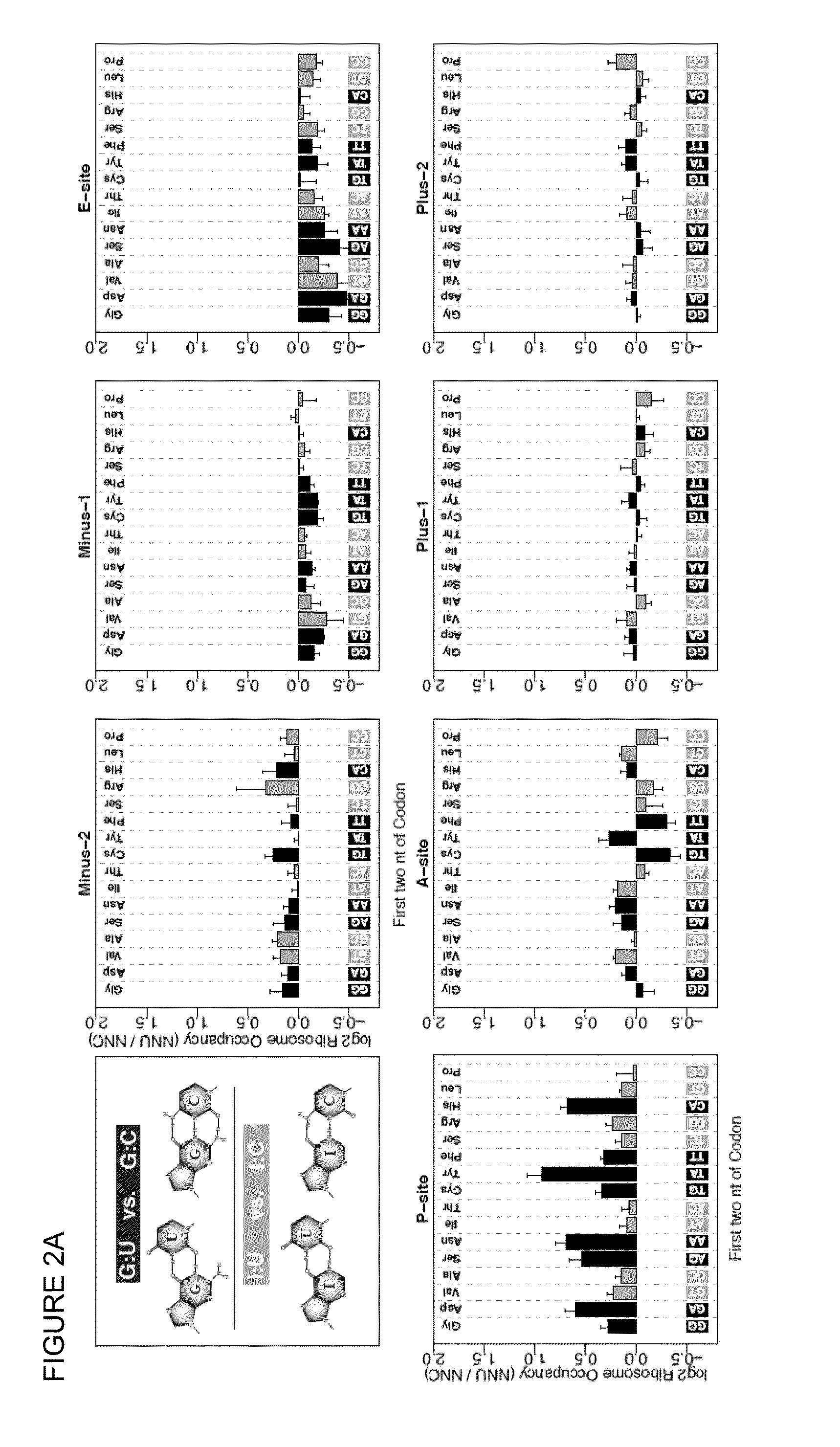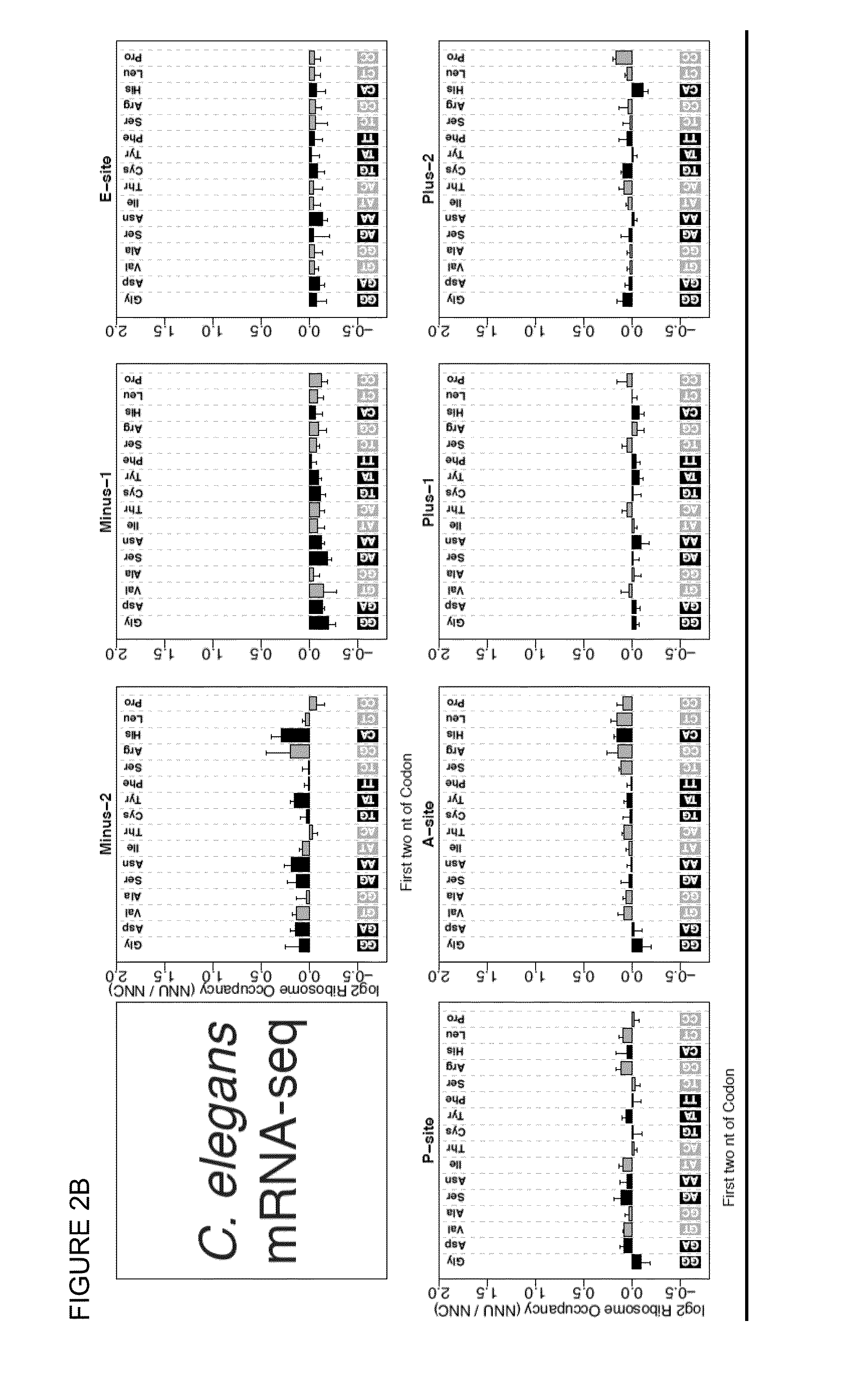Translation Kinetic Mapping, Modification and Harmonization
a technology mapping, applied in the field of translation kinetic mapping, modification and harmonization, can solve the problems of protein misfolding and aggregation, the maximum rate of translational elongation may not be optimal for folding, and the relative codon frequency is not necessarily a precise predictor, so as to increase the yield of active proteins, increase the synthesis of active proteins, and reduce or increase the translation elongation rate
- Summary
- Abstract
- Description
- Claims
- Application Information
AI Technical Summary
Benefits of technology
Problems solved by technology
Method used
Image
Examples
example 1
Wobble Base-Pairing Slows In Vivo Translation Elongation in Metazoans
[0086]In the universal genetic code, most amino acids can be encoded by multiple trinucleotide codons, and the choice among available codons can influence position-specific translation elongation rates. Using sequence-based ribosome profiling, we obtained transcriptome-wide profiles of in vivo ribosome occupancy as a function of codon identity in C. elegans and human cells. Particularly striking in these profiles was a universal trend of higher ribosome occupancy for codons translated via G:U wobble base-pairing when compared to synonymous codons that pair with the same tRNA family using G:C base pairing. These data support a model in which ribosomal translocation is slowed at wobble codon positions.
[0087]To explicitly investigate translational effects related to the character of codon:anticodon base-pairing interactions, we focused on pairs of codons that are (i) identical in the first two bases (ii) differ in the...
example 2
Elongation Rates and Folding Efficiencies of Nascent Polypeptides can be Predictably Manipulated by Engineering Synonymous Codon Substitutions Along their Coding Sequence
[0146]We have developed a metric to predict organism-specific polypeptide elongation rates of any mRNA based on whether each codon is decoded by tRNAs capable of Watson-Crick, non-Watson-Crick or both types of interactions. We demonstrate by pulse-chase analyses in living E. coli cells that sequence engineering based on these concepts predictably modulate translation rates due to changes in polypeptide elongation and show that such alterations significantly impact the folding of proteins of eukaryotic origin. Finally, we demonstrate that adjustment of codon choices based on expression host tRNA pools designed to mimic natural ribosome movement of the original organism can significantly increase the folding efficiency of the encoded polypeptide. To describe the matching of translation rates between source and host ce...
PUM
| Property | Measurement | Unit |
|---|---|---|
| Fraction | aaaaa | aaaaa |
| Fraction | aaaaa | aaaaa |
| Fraction | aaaaa | aaaaa |
Abstract
Description
Claims
Application Information
 Login to View More
Login to View More - R&D
- Intellectual Property
- Life Sciences
- Materials
- Tech Scout
- Unparalleled Data Quality
- Higher Quality Content
- 60% Fewer Hallucinations
Browse by: Latest US Patents, China's latest patents, Technical Efficacy Thesaurus, Application Domain, Technology Topic, Popular Technical Reports.
© 2025 PatSnap. All rights reserved.Legal|Privacy policy|Modern Slavery Act Transparency Statement|Sitemap|About US| Contact US: help@patsnap.com



